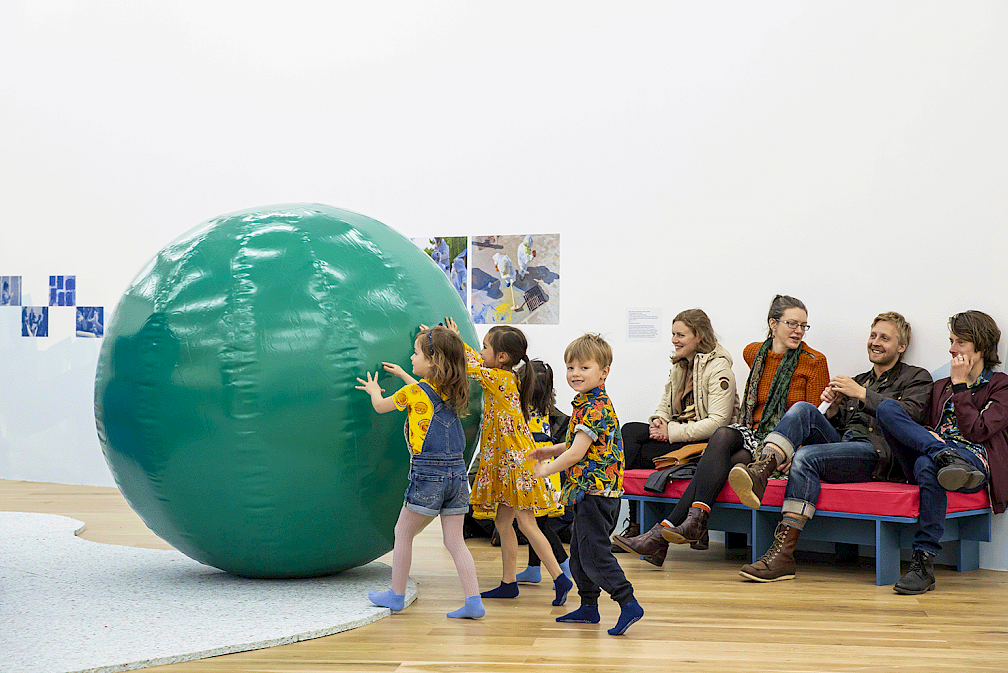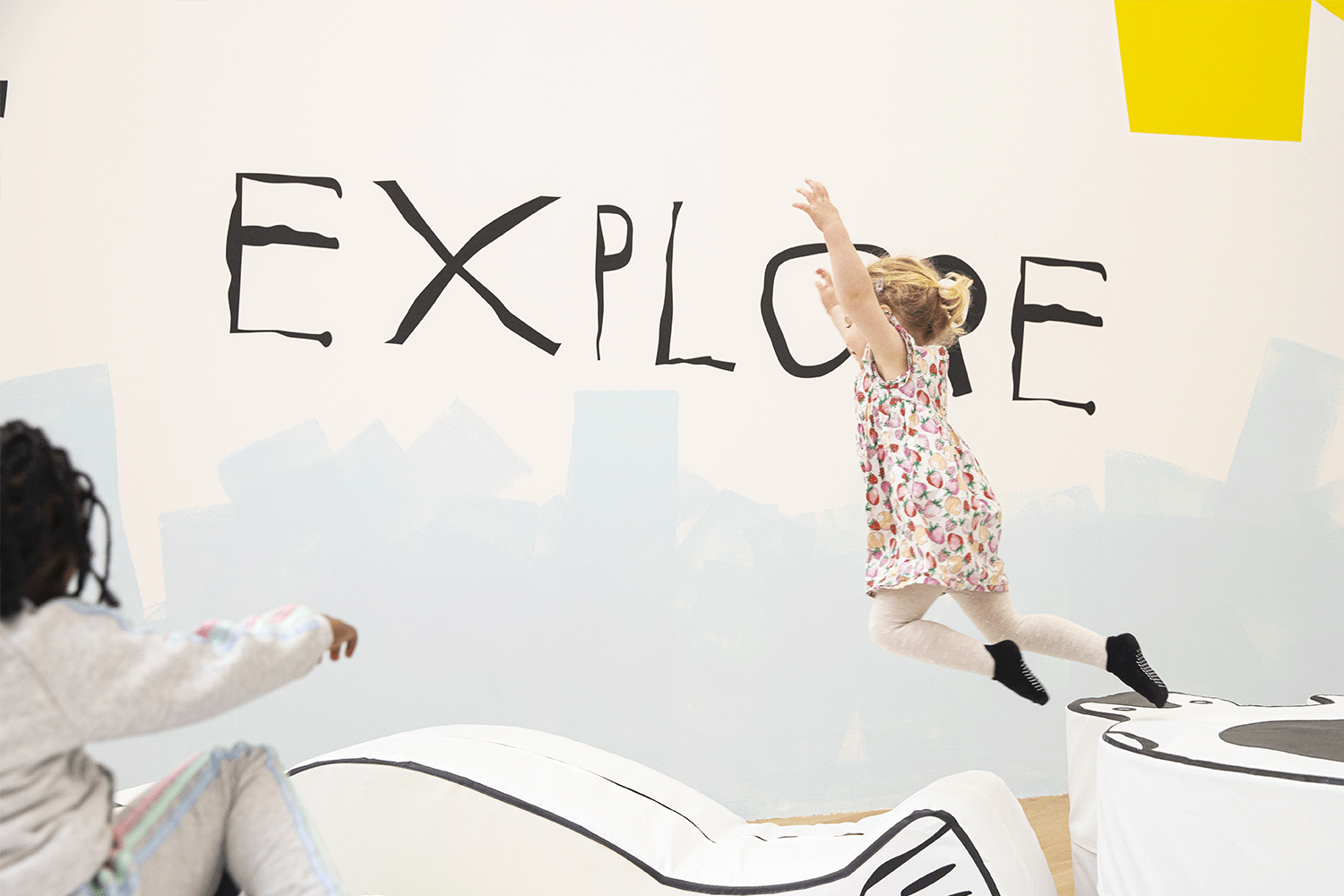Assemble + Schools of Tomorrow: The Place We Imagine
Artist: Assemble Studio, Laura Eldret, Fraser Muggeridge
A playground in a museum? Colours, children, games. Nottingham has created a socially inclusive exhibition. Lina Bo Bardi’s ideas are well utilized in this space, built to be intuitive, exciting, relaxing, and recognizable as a modern space. It jumps out of the quiet, serious form of exhibition practices and becomes a live, vibrant entity. There is a well-established rapport with the public: teachers teaching children to read, children teaching artists to play, and artists sharing how to make art. Schools of Tomorrow is completed with the participation of children, which is an essential part of the exhibition. As people play and have fun in the museum, a question arises: What is the role of exhibitions in the relationship between education and the public?
This program brings Lina Bo Bardi’s utopian playground space to life. The space is characterized by flexibility, allowing the works to be arranged casually, so people are no longer in a passive position. While I looked at Bo Bardi’s drawing of the playground, I could already see the children running around in the square, climbing sculptures and holding a giant ball above their heads. There are three prominent sculptures in the gallery, Big Red and Menagerie are directly inspired by her painting. Fun House was jointly completed with the children of the local school. It was created according to children’s favourite elements, topped with a large green inflatable ball that can be removed from the main structure. Assemble studio tries to make the audience participation completely immersive. Compared to similar projects like Baltic Street Adventure Playground and the Voice of Children, Assemble has investigated more on how to enable children to control their environment, considering how children play at different stages.
With the development of modern art, people are gradually breaking away from the white cube format. The goal of museums is to move from focusing on objects to serving people. The more art permeates people’s lives, the more we find that the public’s knowledge of art varies. So what should museums do in education? When preparing for the exhibition, the curatorial team and the artists separately made meticulous observations of the children. They left small narratives in the corner of the gallery to stimulate every child’s thinking, not just physical games. ruangrupa also emphasized children’s activities in Documenta 15, encouraging children to actively engage by interacting with the show. The core role of such exhibitions is to believe that it is possible to create art embedded in life. Based on educational practices which guide children to learn and make judgments about natural objects and activities.
School of Tomorrow in Nottingham Contemporary created a bridge between the art world and the public. The moment people enter the exhibition, they can feel that they have entered a field composed of works and space, a playground. The function of space at this time is not only a utilitarian background, but also a context. The viewer is no longer gazing at work but has walked into the work. As Lina Bo Bardi said, she would like to see people having fun and feeling the value of this architectural space. Such a public participatory project leads the audience to think more profoundly so that the public and art are no longer two fields, but co-creations.



